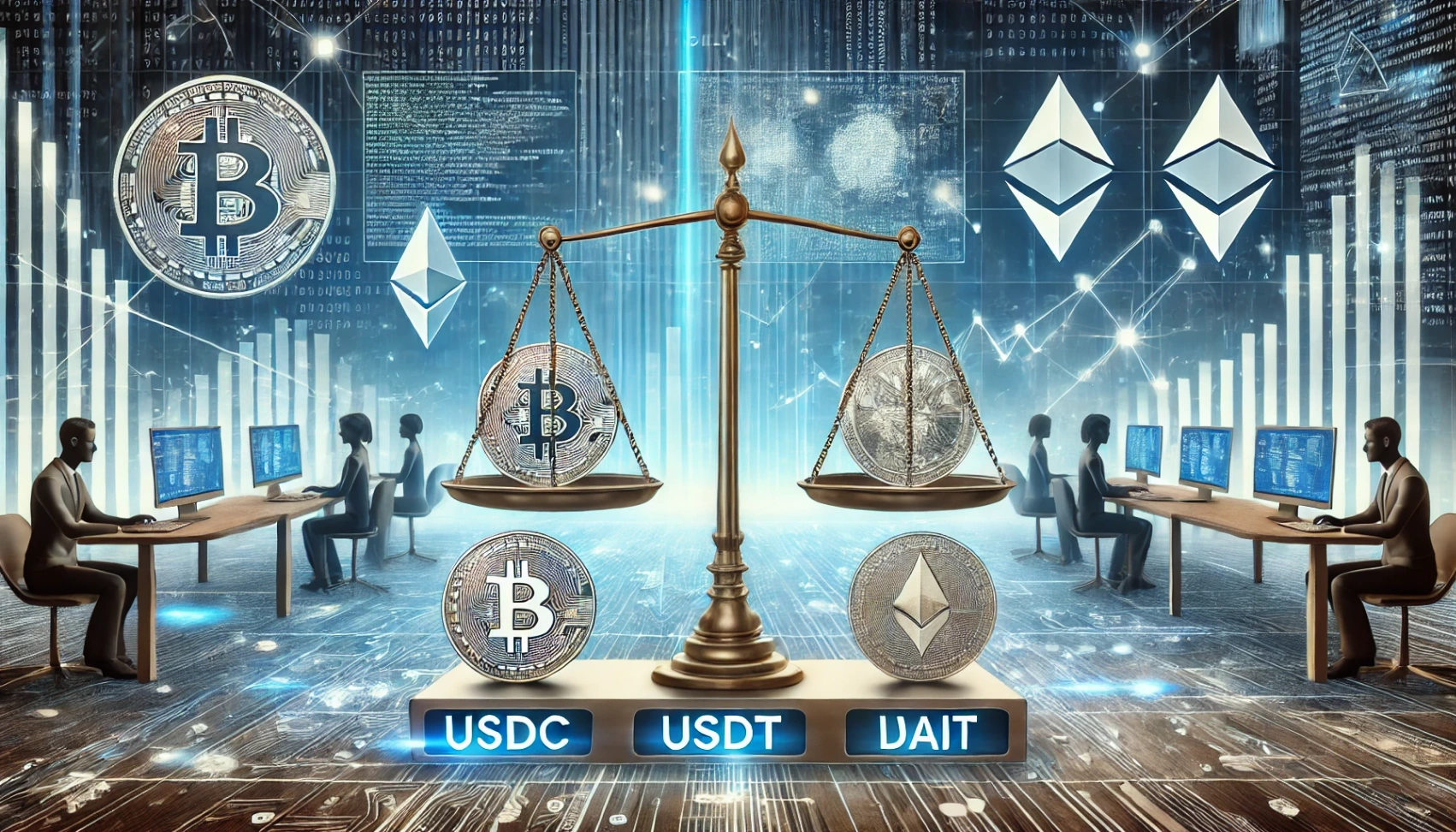In the rapidly evolving world of cryptocurrencies, stablecoins have emerged as a critical solution for one of the sector’s biggest challenges—volatility.
Designed to provide price stability, these digital assets are pegged to traditional currencies like the U.S. dollar or backed by other types of assets.
Are stablecoins truly as stable as their name suggests, or are they built on foundations more fragile than they appear?
What Are Stablecoins?
Stablecoins are a class of cryptocurrencies that aim to maintain a fixed value, typically pegged to a fiat currency such as the U.S. dollar, euro, or yen.
Unlike Bitcoin or Ethereum, which can experience significant price fluctuations in a short period, stablecoins are designed to stay consistent.
They often hold a 1:1 value with the fiat currency they track.
- Fiat-backed stablecoins: These include coins like USDC and USDT, which are backed by reserves of actual fiat currency or equivalents, held in regulated financial institutions.
- Crypto-backed stablecoins: Examples include DAI, which use cryptocurrencies as collateral. These typically require overcollateralization to absorb volatility.
- Algorithmic stablecoins: These rely on algorithms and smart contracts to manage the supply and demand of the coin. TerraUSD (UST) was the most well-known example before its collapse in 2022.
The original purpose of stablecoins was to allow crypto users to store value without leaving the blockchain ecosystem, bypassing the need to convert back to fiat.
Over time, they’ve evolved into critical tools for payments, cross-border transactions, and DeFi applications.

Growth and Popularity
Stablecoins have grown exponentially in use and market capitalization over the past few years.
According to CoinMarketCap, as of early 2025, the combined market cap of the top five stablecoins exceeds $150 billion.
USDT (Tether) accounts for over $90 billion, while USDC (USD Coin) is around $30 billion.
Drivers of this Growth
One of the primary drivers of this growth is the role stablecoins play in cryptocurrency trading.
They serve as a bridge between crypto and fiat, providing traders a liquid and relatively stable asset.
On exchanges, many trading pairs involve stablecoins rather than traditional fiat currencies.
Utility Beyond Trading
Stablecoins offer faster and cheaper international transactions than traditional wire services.
Many DeFi protocols use stablecoins for lending, borrowing, and yield farming.
Some companies have started offering stablecoin payments for salaries and online purchases.
Financial Rise
Even traditional financial institutions and tech companies are getting involved.
PayPal launched its stablecoin (PYUSD) in 2023, aiming to integrate blockchain into mainstream financial services.
Central banks also experiment with digital currencies, blurring the line between stablecoins and state-backed digital money.
Stability Mechanisms
The stability of a stablecoin largely depends on how it maintains its peg. Here are the core mechanisms used:
- Collateral Reserves: Fiat-backed stablecoins hold physical assets in reserve. For example, every USDC is supposed to be backed by one U.S. dollar or equivalent in treasury bonds or cash.
- Smart Contracts and Algorithms: Crypto-backed and algorithmic stablecoins use automated systems to expand or contract supply. For example, when the stablecoin price rises above $1, new coins may be minted; if it falls below, coins are burned.
- Arbitrage Opportunities: Traders are incentivized to take advantage of minor price deviations. If a stablecoin drops to $0.98, they buy it and redeem it for $1, restoring balance.
- Transparency and Audits: Reputable stablecoin issuers conduct regular audits to prove their reserves match the circulating supply. This builds trust and ensures users that their holdings are secure.
Despite these mechanisms, no system is foolproof. Algorithmic models, in particular, have shown significant weaknesses under market stress.
Cracks in the System
The stability of stablecoins has been tested multiple times, and not always successfully.
The most dramatic failure came in May 2022 when TerraUSD (UST), an algorithmic stablecoin, lost its peg and collapsed, wiping out over $40 billion in value from the market.
The event shook investor confidence and led to intense scrutiny of all stablecoin models, especially those lacking transparent reserves.
Other concerns include:
- Reserve Transparency: Tether (USDT), the largest stablecoin by volume, has faced criticism for inconsistent auditing practices and unclear backing, though recent efforts have improved transparency.
- Regulatory Gaps: Because stablecoins are not universally regulated, issuers may not be held to the same standards as banks or payment providers.
- Banking Risks: Fiat-backed stablecoins depend on access to traditional banking systems. Any disruption, such as the failure of a partner bank, can put redemptions at risk.
In essence, while stablecoins promise stability, their performance can vary significantly depending on how they are structured and managed.

Regulatory Outlook
As stablecoins become more embedded in global finance, regulators have taken a more active interest.
- In the United States, several bills have been introduced to establish clear rules for stablecoin issuers. The Clarity for Payment Stablecoins Act proposes that only licensed entities can issue fiat-backed coins and must maintain transparent reserves.
- In the European Union, the Markets in Crypto-Assets (MiCA) regulation, which will take full effect in 2025, includes requirements for stablecoin reserve management, whitepaper disclosure, and issuer authorization.
- Asia has adopted a mixed approach. Japan regulates stablecoins under its existing electronic payments laws, while Singapore requires issuers to hold reserves and submit to audits.
The main regulatory priorities are ensuring that reserves are safe and fully backed and preventing runs on stablecoins during market stress.
Protecting consumers and maintaining financial stability is the ultimate goal of the rise of stablecoins.
Tighter rules may curb innovation, but could also lead to more secure and trustworthy stablecoin options in the long term.
Are Stablecoins Really Stable?
The word “stable” is not a guarantee. You should always research any stablecoin’s backing, transparency, and audit history before trusting it.
Fiat-backed stablecoins like USDC and USDT are generally more stable as long as reserves and those reserves fully back them are transparent and accessible.
Crypto-backed stablecoins (like DAI) are more volatile because the assets backing them can fluctuate in price.
Algorithmic stablecoins (like the failed TerraUSD) have proven the least stable. These rely on code and market behavior, not actual reserves.
Conclusion
Stablecoins have become essential to the cryptocurrency ecosystem, offering a rare mix of speed, liquidity, and stability.
But the name “stablecoin” doesn’t automatically guarantee safety. It depends on its reserve backing, transparency, and operational model.
So, are stablecoins really stable? Some are. Others are only as stable as the trust you place in them.










